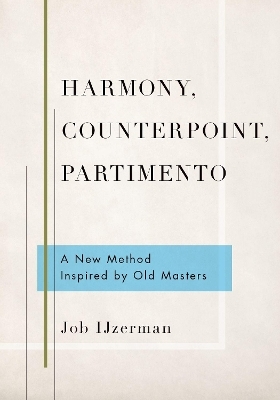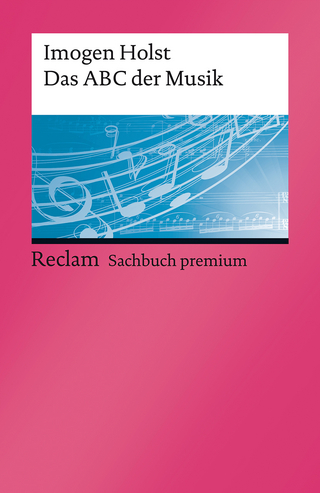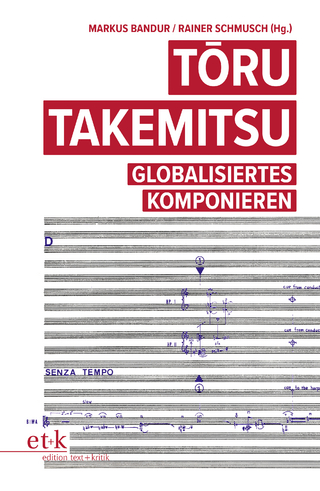
Harmony, Counterpoint, Partimento
Oxford University Press Inc (Verlag)
978-0-19-069500-2 (ISBN)
· the hardcopy text, providing essential stylistic and technical information and repertoire discussion;
· an online workbook with a full range of exercises, including partimenti by Fenaroli, Sala, and others, along with arrangements of eighteenth- and nineteenth-century compositions;
· an online instructor's manual providing additional information and realizations of all exercises.
Linking theoretical knowledge with aural perception and aesthetic experience, the exercises encompass various activities, such as singing, playing, improvising, and notation, which challenge and develop the student's harmonic, melodic, and rhythmic imagination. Covering the common-practice period (Corelli to Brahms), Harmony, Counterpoint, Partimento is a core component of practice-oriented training of musicianship skills, in conjunction with solfeggio, analysis, and modal or tonal counterpoint.
Job IJzerman has graduated in piano and music theory. He teaches music theory at the Conservatory of Amsterdam. A scholarship granted by the Dutch Department of Education, Culture and Science allowed him to perform research into the field of partimento and schema theory. The textbook Harmony, Counterpoint, Partimento is its final outcome.
Contents
Preface
Part 1 Harmony in Two and Three Parts
Chapter 1 Two-Part Scale Realization
1.1 Parallel Thirds and Parallel Sixths
1.2 Alternation of Thirds and Sixths
1.3 Suspensions: Sevenths and Seconds
1.4 Alternative Voice Leading of Suspension Patterns
Chapter 2 Three-Part Scale Realization
2.1 The Fauxbourdon
2.2 The Monte and the 7-6 Fauxbourdon
2.3 The Stepwise Romanesca
2.4 Fifth Down Fourth Up
2.5 The Tied Bass
Chapter 3 The Three-Part Cadence
3.1 The Simple Cadence
3.2 The Compound Cadence
3.3 The Double Cadence
3.4 The Galant Cadence
3.5 The Neapolitan Cadence
Chapter 4 The Rule of the Octave
4.1 The Ascending Pentachord
4.2 The Descending Pentachord
4.3 The Ascending Tetrachord
4.4 The Descending Tetrachord
Chapter 5 Galant Schemata
5.1 The Leaping Romanesca
5.2 The Quiescenza
5.3 The Prinner
5.4 The Monte Romanesca
5.5 The Fenaroli
5.6 The Folia
Part Two Harmony in Four Parts
Chapter 6 Fundamentals of Four-Part Harmony
6.1 The Compound Cadence (II)
6.2 The Galant Cadence (II)
6.3 The Discant Cadence
6.4 The Dominant Seventh Chord
6.5 The Dominant Seventh Family
6.6 The Four-Part Rule of the Octave
Chapter 7 Beyond the Rule of the Octave
7.1 The Diminished Seventh Family
7.2 Fifth Down Fourth Up and Third Down Second Up
7.3 The Tied Bass (II)
7.4 Descending Thirds
7.5 The Folia (II)
Chapter 8 Chromaticism
8.1. The Fonte
8.2 The Chromatic Monte
8.3 Tonicization in Descending Thirds
8.4 The Chromatic Tetrachord: The Lamento
8.5 The Chromatic Tetrachord: Advanced Realizations
8.6 The Chain of Dominants
Chapter 9 Enharmonization
9.1 The Minor Seventh and the Augmented Sixth
9.2 The Augmented Sixth and the Minor Seventh
9.3 Enharmonizations of the Diminished Seventh Chord
9.4 Enharmonizations of the Augmented-Fifth Triad
9.5 The Omnibus
Appendix I Chord Construction
Appendix II Cadences
Online Supplements:
Workbook
Realizations of the Exercises
Manual for Teachers
Midi Sound Files of the Examples
Preface
| Erscheinungsdatum | 09.09.2018 |
|---|---|
| Zusatzinfo | 511 line |
| Verlagsort | New York |
| Sprache | englisch |
| Maße | 257 x 183 mm |
| Gewicht | 1038 g |
| Themenwelt | Kunst / Musik / Theater ► Musik ► Musiktheorie / Musiklehre |
| ISBN-10 | 0-19-069500-5 / 0190695005 |
| ISBN-13 | 978-0-19-069500-2 / 9780190695002 |
| Zustand | Neuware |
| Informationen gemäß Produktsicherheitsverordnung (GPSR) | |
| Haben Sie eine Frage zum Produkt? |
aus dem Bereich


